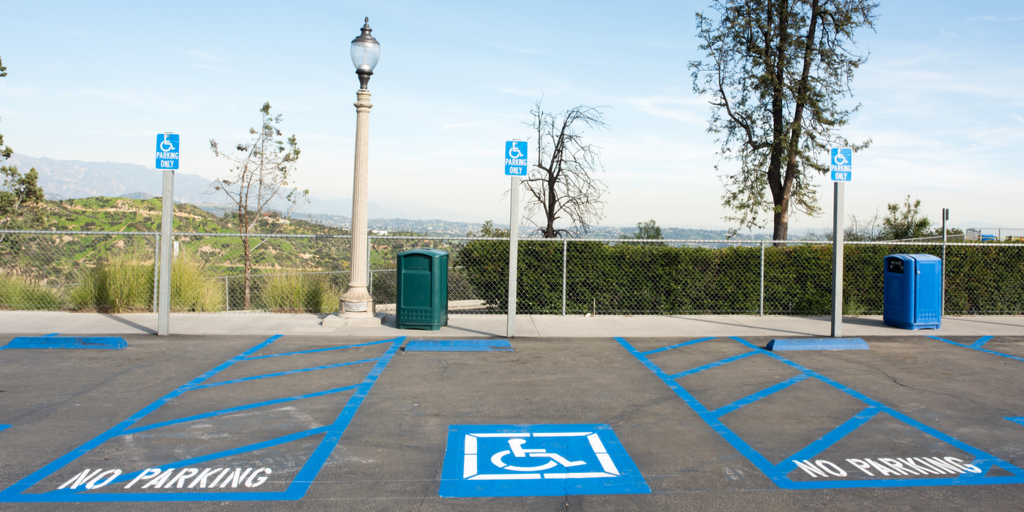Judges Can’t Bring the Americans With Disabilities Act into the Digital Age
Imagine you own a small business. One day you discover you’ve been sued under the Americans with Disabilities Act. You’re devastated. No decent person is against helping the disabled. You might worry that you’ve failed to uphold truth, justice, and the American way.
But then the details emerge. The plaintiff, you learn, has deliberately elected not to warn you of your store’s ADA infractions. His lawyer has cut and pasted your business’s name and address into a form complaint. That complaint is quite vague about what you did wrong; the plaintiff just accuses you of “endangering his safety” by failing to remove unspecified “architectural barriers.”
Wanting to know which sink, counter, or doorway should be adjusted, you try to contact the plaintiff’s lawyer. It takes you a long time to get hold of him, and, when you finally do, he knows almost nothing about your case. He has filed more ADA lawsuits than he can track. It turns out that the plaintiff entered your store solely to set up the lawsuit—one of hundreds he has filed—and that the lawyer is interested not in your counters, sinks, or doorways, but in a settlement payment.
You’ve been exposed to the pitiless dark side of the American way—that of the grifters and shysters. You’ve seen firsthand how social trust is corroded by those who wield victimhood as a weapon. And you’ve joined the countless others who, tragically, know the ADA chiefly by its faults.
Our hearts were in the right place. The ADA guarantees the disabled “the full and equal enjoyment” of the goods and services of “any place of public accommodation.” Thanks to the ADA, most buildings must have wide entrances, ramps, elevators, and special parking spaces—and that is all to the good. But the scope and intricacy of the law’s implementing regulations foreclose perfect compliance, and the absence of a notice-and-cure clause means that even the most picayune breach can spark an immediate lawsuit.
A few bad actors have turned the law’s private right of action into a racket. It is not uncommon for a serial plaintiff to threaten to sue a shop he has never visited for infractions that, if he’s paid to go away (and he usually is), he will never have to identify. The worst abuses defy parody. Take, for instance, the donut stand run by a woman herself confined to a wheelchair that was sued because its handicapped parking signs didn’t say “Minimum fine $250.”
The latest fad among the ADA bar is suing companies over the state of their websites and mobile apps. Around 150 such lawsuits are filed each month.
There is one small problem: the ADA does not govern the internet. The law was passed in 1990, before the commercial internet even existed. It lists 12 categories of public accommodation, all of them physical spaces. And it says nothing that might bless, let alone guide, its being applied to cyberspace.
Notwithstanding its lack of authority to do so, the Department of Justice Civil Rights Division started trying to craft web accessibility rules for the ADA in 2010. After seven years of fribbling about, it gave up. That’s when the lawsuits began to proliferate, the lawyers in effect asking the judiciary to step forth and write the new law.
Judges are not supposed to draft the laws they want; they are supposed to apply the laws they get. And the laws they get should come not from themselves, nor even from jacks-in-office at the Justice Department, but from the people’s representatives in Congress. Acting on an understandable but still misguided desire to achieve rough justice for the disabled, some courts have nonetheless expanded the ADA to cover websites.
Some courts. Disturbing as it may be to watch the executive branch seize the power to legislate, at least the Department of Justice could be expected (had it ever gotten its act together) to issue just one set of spurious rules. In trying to update the ADA themselves, judges have added the vice of inconsistency to the evil of illegitimacy. Some say that even a website-only business must comply with the ADA. Others say that a website need comply only when a “nexus” exists between it and a brick-and-mortar store. Still others adhere to the ADA as written.
How is a website to comply with the ADA? Problems abound. For example, the ADA tells a store to ensure equal access to its inventory, not what inventory it must stock. Yet at many websites, access is inventory. Judge Posner noted that “it is hardly a feasible judicial function to decide whether shoe stores should sell single shoes to one-legged persons and if so at what price.” But neither is it a “feasible judicial function” to decide how Facebook must modify for a blind person the protean array of photo collages, ad videos, comments, and “like” reactions in her News Feed.
A court that expands the ADA typically ducks this problem. After declaring a website out of compliance, the judge says that the details of compliance are a matter of remedy—a topic for the end of the case. Then the case promptly settles. How satisfying it must be to grant broad new rights to the disabled, and how convenient to leave the real work of standard-setting for a tomorrow that never comes.
Businesses surely favor greater web-accessibility. But they need practical guidance about what is expected—something the courts are neither empowered nor equipped to provide.
Domino’s Pizza is one of the many companies caught in the current state of uncertainty. The U.S. Court of Appeals for the Ninth Circuit ruled that its website and mobile app must comply with the ADA. The pizza chain has asked the Supreme Court to review that ruling. The Court should take the case and remind the rest of the third branch of its proper, narrow role in our self-governing republic.
Only Congress may create ADA 2.0.

